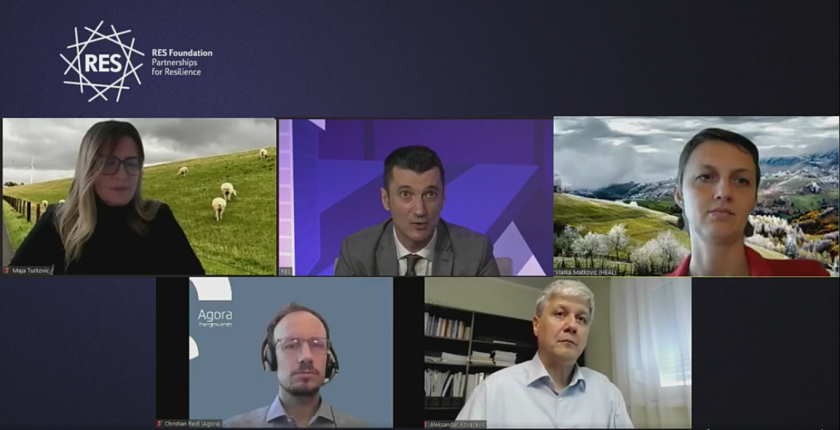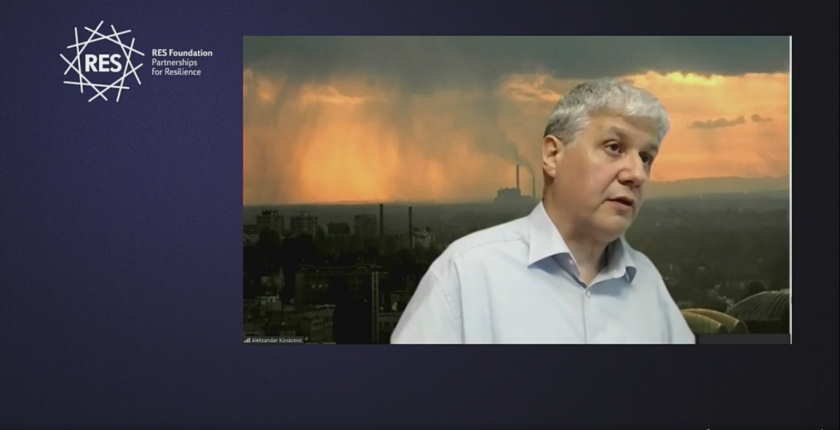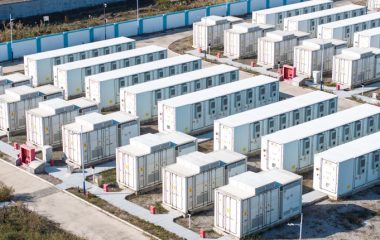
Thanks to current market trends, reflected in decreasing costs of investment in wind farms and solar power plants and falling electricity prices, renewables are on track to push coal out of the market in the Western Balkans. Decision makers can slow down or speed up the coal phase-out, but regardless of their actions, the region is likely to transition to energy systems in which the share of coal will be much lower than the current 70%, with some projections even suggesting only 20% by 2030.
The price of electricity from wind and solar is already competitive with power produced in coal-fired plants, and in the coming years will continue to fall, to EUR 40 per MWh, a price no other type of power generation will be able to match, according to speakers at regional conference How to Win the Balkan Air-Pollution Dodgeball, organized by the RES Foundation.
Subsidies for renewable energy sources are not needed in the region, and, on the other hand, electricity production from coal will be under increasing pressure, which is reflected primarily in the introduction of a tax on carbon dioxide (CO2).
Jasmina Trhulj: Renewables’ installed capacity have increased 91%

Jasmina Trhulj, head of the Electricity Department at the Energy Community Secretariat, said the contracting parties have signed the Sofia Declaration, pledging to work towards a 2050 climate-neutral goal, as well as to abolish subsidies which, according to the latest data, reached EUR 2 billion in last five years.
In a situation when 70% of electricity is produced from coal and 70% of CO2 emissions come from electricity production, the key measure to achieve the 2050 goal is decarbonization or coal phase-out, she said.
Renewables will push coal out of the market
According to the study produced by the Secretariat, the introduction of a CO2 tax and the integration of the electricity markets is the best way to implement decarbonization.
Installed capacities for renewable sources have increased by 91% in the last year, which means that coal power plants will be squeezed out of the market, she added.
TPP Pljevlja is expected to cease production by the end of the year
The implementation of the EU Large Combustion Plant Directive (LCPD) already represents a kind of tax on CO2 emissions because coal power plants must invest in modernization in order to comply with it.
The implementation of the LCPD is already bringing a coal phase-out in the region, and the first example is the Pljevlja thermal power plant in Montenegro, which will be shut down by the end of the year, according to her.
Matković: It is possible to close all thermal power plants by 2030.
Vlatka Matković, from the Health & Environment Alliance (HEAL), said that 16 thermal power plants in the region cause 3,900 premature deaths, 8,500 cases of respiratory diseases, and one million working days lost a year.
Damage to human health is estimated to cost EUR 11 billion, and this must be taken into account when decisions are made, not just economic gain for a small number of people, she said.
Matković said it is possible and necessary to close all thermal power plants by 2030.
Maja Turković: Serbia can reduce the share of coal to 20% by 2030

According to expert Maja Turković, the closure of thermal power plants in the region depends on the timing of the introduction of the CO2 tax, which will reduce the competitiveness of goods produced in Serbia and its attractiveness for foreign investments.
The technology has advanced, so wind farms and solar power plants’ levelized cost of electricity is below the market price and is significantly lower than the marginal costs of production from thermal power plants, she said.
Energy from solar and wind is already cheaper than production from coal
Turković said that Bulgaria’s largest thermal power plant has recently asked the state for a price of EUR 69 per MWh to cover costs only. She anticipates that the cost of electricity from wind will fall below EUR 45 per MWh and for solar below EUR 40 per MWh, and that it can hardly be beaten by other technologies. On the other hand, if a CO2 tax is introduced, the price in Serbia would be around EUR 70-75 per MWh.
In the next few years, Serbia can build wind power plants with an installed capacity of several hundred megawatts, without subsidies, investments in the transmission network, or costs for citizens and the state, because these projects are ready, she said.
Zero-subsidy wind farm projects are ready for implementation
If Serbia is looking for quick wins in solar it must allow the construction of solar power plants on state-owned land. This could pave the way for the installation of solar power plants with a capacity of 1 GW within ten years.
By 2030, Serbia can cut the share of coal in energy production to 20%, she said.
Even if countries in the region do nothing to help the development of renewables, their share will grow thanks to market forces.
Changes are coming, I am optimistic, we cannot stop it, said Turković, adding that the market is a much stronger force than regional decision makers can imagine.
Redl: Market integration reduces the need for balancing
As a solution for balancing renewable energy systems, Christian Redl of think-thank Agora Energiewende named better interconnection between electricity networks and market development.
The good thing is that wind does not blow everywhere at the same time, so the bigger the network the smaller the fluctuation. This is obvious even at the level of two neighboring countries’ networks, and especially at the level of the EU, which ultimately reduces the need for balancing by up to 50%, he said.
Similar benefits can be obtained by connecting the networks of the Western Balkans countries.
Aleksandar Kovačević: The pressure on companies like EPS will increase

Aleksandar Kovačević, a Senior Visiting Research Fellow at the Oxford Institute for Energy Studies, also believes that despite everything, all the conditions are in place to create a hybrid energy system based on renewable energy sources in Serbia in the next ten years. This system would be able to guarantee supply and export to countries that cannot produce peak load energy.
The market value of thermal power plants is only a fraction of the official one
According to Kovačević, energy companies in the region, whose production relies on coal, operate without problems, but that is just an illusion. The market value of their coal power plants is very low, about five percent of the one officially mentioned, as demonstrated by power plants from neighboring countries that have been valued by the market.
The issue of the CO2 tax, which would be introduced by the EU as a carbon border adjustment mechanism, depends on how the price of energy from coal will be calculated.
The impact of the tax on CO2 will depend on the price of energy from coal
If that price is low, that is, if it does not include external costs, such as the cost to human health, it is possible that exports to the EU will remain the same, or slightly lower, he added.
Kovačević said that the sustainability of the energy companies in the region will depend on whether it will be physically feasible for them to mine coal and produce energy, but it is clear that pressure on companies like the Serbia’s Elektroprivreda Srbije (EPS) is growing, and that uncertainty in their business is increasing.









Be the first one to comment on this article.